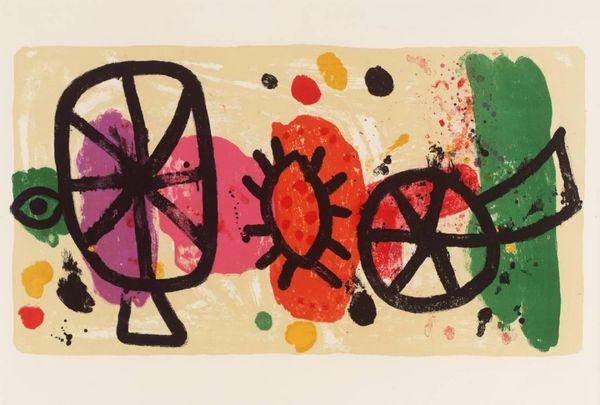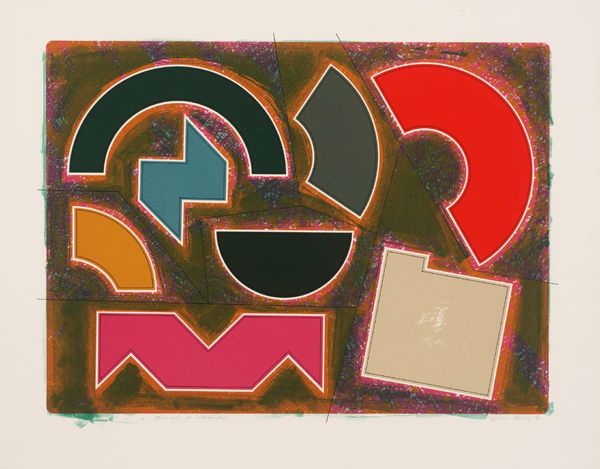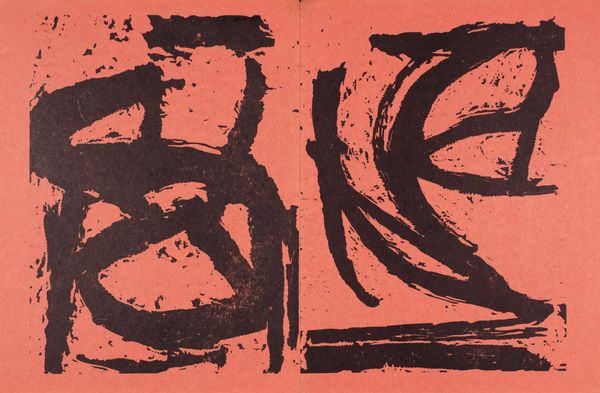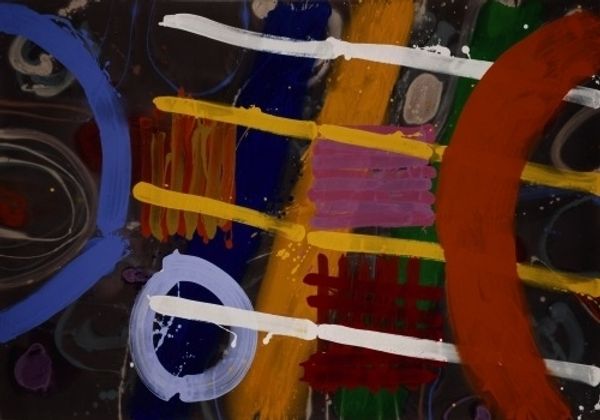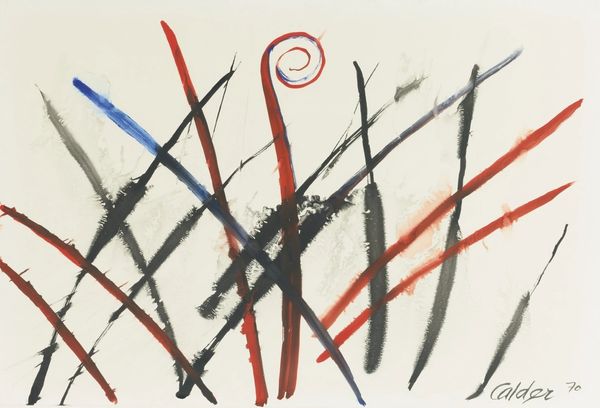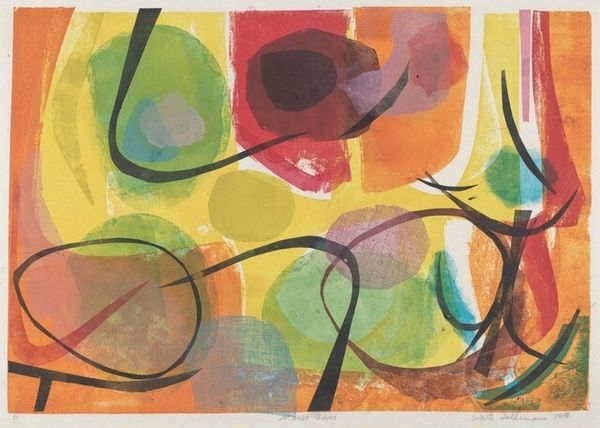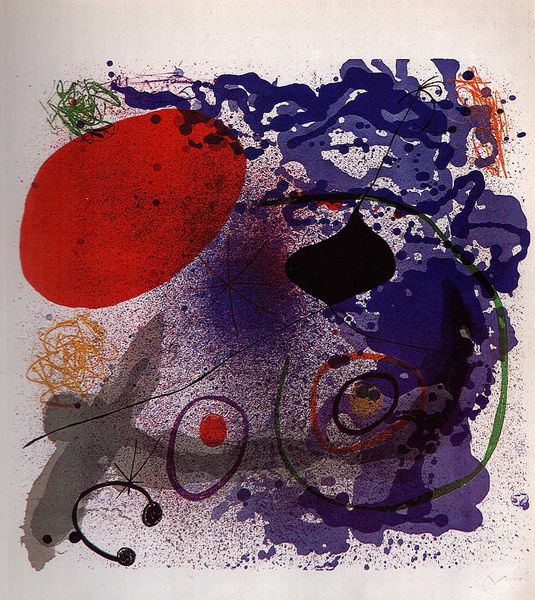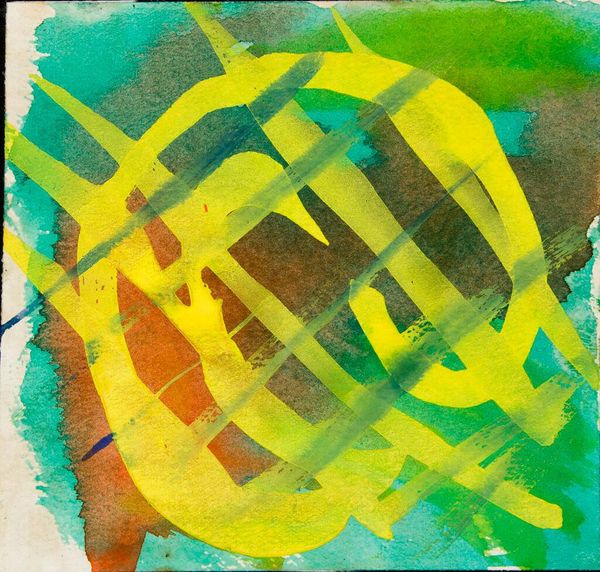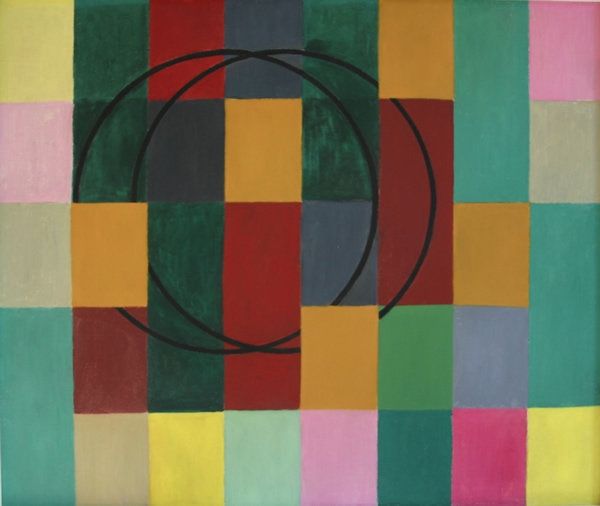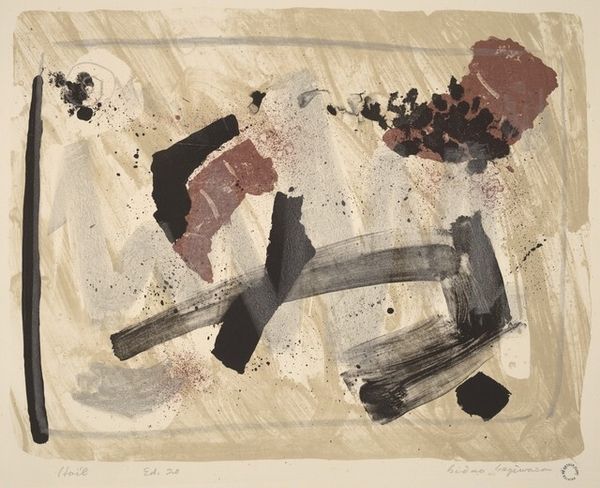
Copyright: Denise Green,Fair Use
Curator: "Surya-Chandra #1," a mixed media work by Denise Green created in 1986. The title references the sun and moon. The blend of watercolors and acrylics provides an intriguing layered effect on the canvas. Editor: The immediate impression is a study in contrasts – a grounding darkness within swirling, diffused color. There's almost a primal tension in this play of chaos and order. It makes you want to pause. Curator: Green was deeply involved with modernist abstraction; yet she was always attempting to transcend formalist aesthetics through symbolism and the introduction of cultural references. Note how this circle motif— perhaps alluding to Eastern cosmologies or even alchemy—interrupts what might have remained an exercise in painterly gesture. Editor: Absolutely. You cannot divorce her work from its time; postmodernism saw the questioning of authority, coupled with hybridity and the recuperation of what was once seen as “other.” I read that circle almost as a deconstructed halo – commenting on the collapse of faith perhaps or offering instead the universality of something cyclical, natural… celestial? Curator: A point well taken. It's easy to view Green’s artistic language through the prism of abstract expressionism, noting similarities to Rothko or Newman, especially concerning spiritual concerns or the sublime, but that might be too limited. We might even interpret her geometrical interjections, set against seemingly unbound washes of color, as a conscious deconstruction of traditionally hierarchical symbolic artistic languages. Editor: I appreciate that consideration; it avoids a solely Eurocentric frame. How can we forget the impact of feminist critique and the re-evaluation of non-Western epistemologies that mark that period? This could very well speak to those conversations about power structures within both art history and society more broadly. This artist seems to resist closure and monolithic interpretation, don’t you agree? Curator: Indeed. Thinking of museums and institutions today, Green’s approach challenges them. To contextualize artists such as her requires continual reflection on inclusivity and historical interpretation. The canvas, once seen, poses more questions than answers about meaning, art and ourselves. Editor: Looking closely helps see process, too – where paint pooled or resisted; where accident became beautiful intentionality – perhaps echoing Green's own lived negotiation between order and beautiful "accident" as an artist situated in her cultural context.
Comments
No comments
Be the first to comment and join the conversation on the ultimate creative platform.

